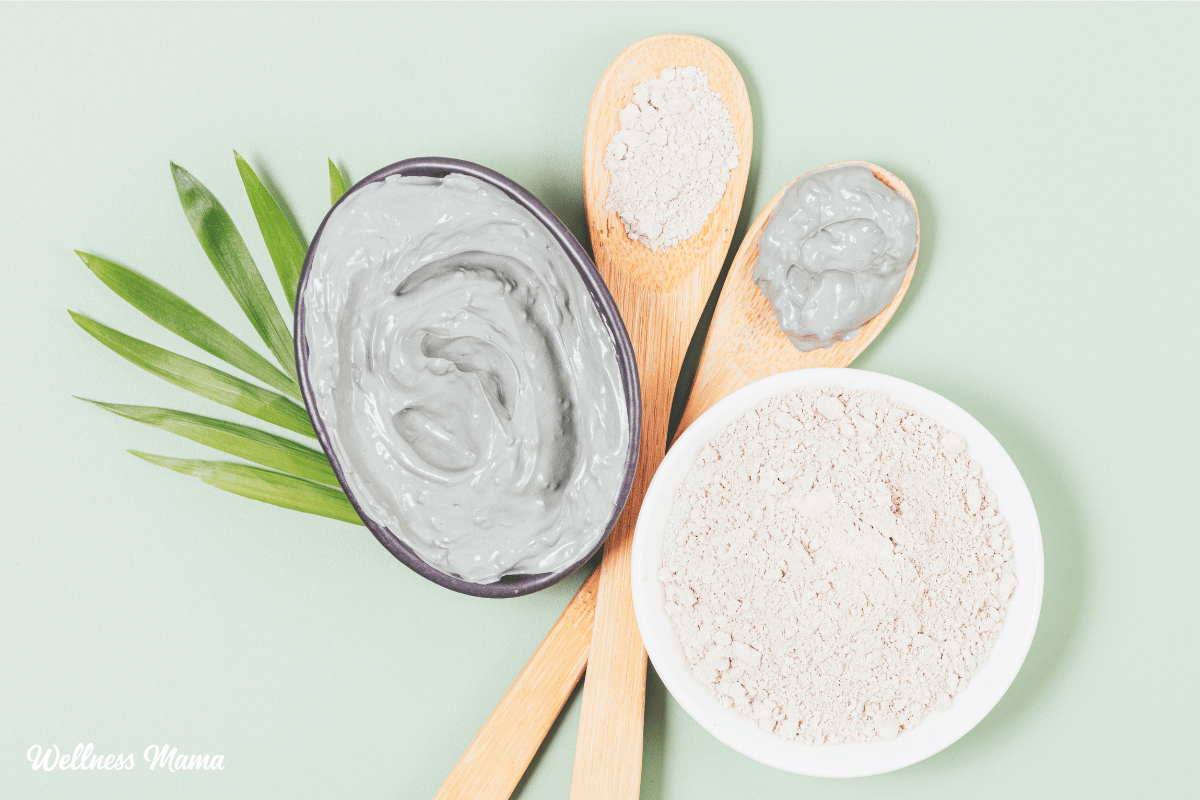Despite having similar names, type 1 and type 2 diabetes are distinct illnesses with diverse root causes. The main difference between type 1 and type 2 diabetes is that type 1 is thought to be caused by an autoimmune reaction and generally appears during childhood.
On the other hand, type 2 diabetes is a long-term condition that takes years to develop and is associated with bad lifestyle choices, such as inactivity and being overweight.
Generally, adults are diagnosed with it. Although the reasons behind type 1 diabetes are not entirely known, family history may play a role.
Understanding Type 1 Diabetes
When your blood sugar (glucose) is too high, it is known as diabetes. That is because the glucose in your blood is the primary energy source for your body, obtained mainly from the food you eat.
Insulin, a hormone made by the pancreas, helps to take the glucose from your blood and transfer it to your cells for energy. Another hormone, glucagon, works with insulin to maintain blood glucose levels.
As per research, in most people with type 1 diabetes, the body’s immune system, which usually fights infection, attacks and destroys the cells in the pancreas that make insulin.
As a result, your pancreas stops producing insulin. Without insulin, glucose can’t get into your cells, and your blood glucose rises above normal. As a result, people with type 1 diabetes must take insulin daily to stay alive.
Managing Type 1 Diabetes like a Pro (Without Insulin)
So far, there is no way to reverse the condition. Moreover, there is no alternative to manage type-1 diabetes significantly without insulin interference. However, a healthy diet and active lifestyle can benefit.
Preventing diabetes is always preferable to managing the condition. Diabetes patients experience sudden changes in their blood glucose levels. In addition, your blood sugar levels may rise or fall due to your daily activities, habits, diet, and other variables. However, if an individual monitors glucose levels, they can manage and prevent the condition.
With the assistance of modern-day innovation by HealthifyMe, you do not need to prick your fingers to track your glucose. Instead, you can do it easily with the help of the Continuous Glucose Monitor by HealthifyMe Pro.
The wearable gadget called BIOS measures blood sugar levels in real time. The Pro coaches track your glucose fluctuations after eating a meal or exercising and, depending on that, help create a customised meal plan for maintaining stable glucose levels.
Additionally, the HealthifyPro program assists users in ensuring that their metabolic health is on track. The health and fitness coaches routinely provide advice and guidance when necessary.
The Continuous Glucose Monitor (CGM) is a core element as it constantly monitors your blood sugar levels through a sensor on one of your arms. Moreover, it is a complete package offering your real-time assessment of your glucose levels and empowering you to understand what foods impact your glucose levels and how.
All the components of HealthifyPro work together to give the user insights. For example, your daily metabolic score increases the more often your sugar remains within a healthy range. Based on this, there is also some predictive analysis taking place.
For example, the HealthifyMe app will calculate your Hba1C, measuring your average sugar levels over time. Then, it will alert you to a sugar spike or dip based on the food you eat or don’t eat.
Risk Factors of Type 1 Diabetes
It is unclear what causes type 1 diabetes, although it is believed to be an immune reaction in which the body mistakenly attacks itself. Risk factors for this condition are not as well-understood as those of prediabetes and type 2 diabetes. As per the CDC, Some known risk factors include:
Genetic influences
The exact cause of type 1 diabetes is still unknown; however, your genes, inherited and those derived from diabetes history in your family, may be related to the condition. Therefore, a person’s risk of developing type 1 diabetes is higher if diabetes runs in their family.
Studies have shown that generations can pass down the diabetic pattern, and specific gene variants can also lead to an increased risk of type 1 diabetes. Although the genes may pass from parent to child, not everyone with these genes will get the condition.
For example, identical twins, who are genetically similar, may have differing levels of risk for developing type 1 diabetes. Therefore, it suggests that genes may not be the only factor determining whether a person will develop type 1 diabetes.
External Variables
Race may be a factor in one’s risk of developing type 1 diabetes, as white people may be more genetically predisposed to the condition. It is unclear which infections may cause type 1 diabetes and other factors, such as living in colder climates or having more cases of type 1 diabetes in the winter than in the summer.
There may be other factors that contribute to who develops type 1 diabetes. For example, African American and Hispanic or Latino people in the United States are less likely to develop type 1 diabetes than White people.
There is little knowledge about the risk factors for type 1 diabetes. It is because certain people’s exposure to specific triggers may not produce type 1 diabetes in other people.
Causes of Type 1 Diabetes
The immunological response of the body’s immune system to external pathogens such as dangerous viruses and germs may be the aetiology of type 1 diabetes.
In persons with type 1 diabetes, the immune system misidentifies the body’s healthy cells as foreign invaders and attacks and destroys the pancreatic beta cells, which produce insulin. Once these beta cells are gone, the body can no longer create insulin.
The underlying cause of why the immune system occasionally targets the body’s cells is unknown, but it may be due to environmental and genetic factors like exposure to viruses.
Studies are still under process on autoimmune illnesses like type 1 diabetes, which does not necessarily result from diet or lifestyle choices.
Type 1 Diabetes – Symptoms
Early detection and treatment of diabetes can significantly reduce the risk of developing its associated complications. While type 1 and 2 diabetes share many similarities, their causes differ significantly and require different treatments.
In some cases, particularly with adults newly diagnosed with type 1 diabetes, the symptoms may mirror those of type 2 diabetes, leading to potential confusion. Therefore, it is crucial to be aware of the common symptoms of diabetes, though mild symptoms may go unnoticed. Some symptoms include:
- Excess thirst
- An increased appetite (especially after eating)
- Mouth ache
- Stomach pain and vomiting
- Frequent urination
- Unexpected weight loss
- Fatigue
- Blurred vision
- Difficulty breathing
- Frequent vaginal, urinary, or skin infections
- Irritability or mood swings
Do Symptoms Occur Suddenly?
People with type 1 diabetes may experience a sudden onset of symptoms, while those with type 2 diabetes may develop them gradually or not at all.
In some cases, people may not detect something is wrong until they experience the signs of diabetic ketoacidosis (DKA), which can be identified as a fruity odour on the breath, heavy, taxed breathing, and vomiting.
Experts say DKA can lead to stupor, unconsciousness, and even death if left untreated. Therefore, someone experiencing any of these symptoms should contact their healthcare provider immediately for an accurate diagnosis, as these could be signs of other medical issues.
Some people with type 1 diabetes may also experience a temporary remission of symptoms, known as a honeymoon period, while their pancreas is still secreting some insulin.
This period can last anywhere from a week to a year. However, the absence of symptoms does not mean the diabetes is gone, and symptoms may return when the pancreas cannot secrete insulin any longer.
The HealthifyMe Note
Someone with type 1 diabetes may have inherited the condition, which can be passed down to future generations. People with type 1 diabetes might experience rapid weight loss, extreme fatigue, increased hunger, and dehydration.
Other complications of this condition can include low blood pressure, bacterial skin infections, fungal infections, kidney failure, blindness, and other illnesses. Therefore, it is crucial to take preventive measures to protect your health.
Type 1 Diabetes – Diagnosis
If a patient shows signs of diabetes, medical professionals will often do a type 1 diabetes test. The most common approach medical experts use is the random plasma glucose (RPG) test, which accurately records the patient’s blood sugar level.
In addition, the A1C blood test is occasionally employed to determine how long the patient has had high blood sugar. While these tests can confirm diabetes, they cannot distinguish between type 1 and type 2. Knowing whether a patient has type 1 or type 2 diabetes is critical since the treatment for each type varies.
To determine the type of diabetes, a doctor may test the patient’s blood for specific autoantibodies. Autoantibodies are antibodies that target the body’s healthy organs and cells. Particular autoantibodies are usually present in type 1 diabetes but not in type 2.
If you or a family member have type 1 diabetes, your doctor can perform an autoantibody test. This test can detect a higher risk of type 1 diabetes in family members, even if they have no symptoms. In addition, those under 20 who have a type 1 diabetic relative should also consider getting tested. It includes cousins, aunts, uncles, nieces, nephews, grandparents, and half-siblings.
Type 1 Diabetes Treatment
Those with type 1 diabetes can still lead active, healthy lives. However, to do so, it is vital to keep track of your blood sugar levels, with your doctor informing you of the desired readings. In addition, it may be necessary to adjust your insulin, diet, and activity.
If you have type 1 diabetes, it is essential to take insulin regularly as your body cannot produce it. You can take it with a syringe, pen, pump or inhaler, and your doctor will recommend the correct dosage depending on your diet, lifestyle and blood sugar levels. Additionally, you must check your blood glucose levels frequently; your doctor will tell you how often you should do this.
Your doctor will generally address three things when discussing insulin:
- Onset: How quickly a medication lowers your blood sugar is referred to as its onset.
- Peak time: It is known as peak time, when insulin works the most to drop your blood sugar.
- Duration: how long it continues to function once it comes into action.
Insulin Varieties
There are numerous insulin varieties.
- Rapid-acting takes roughly 15 minutes to start working. After you take it, it reaches its peak and works for another two to four hours.
- Short-acting or regular gets to work in roughly 30 minutes. After that, it works continuously for 3 to 6 hours, peaking between 2 and 3 hours.
- Intermediate-acting will take 2 to 4 hours after your shot to enter your system. It operates for 12 to 18 hours and peaks between 4 and 12 hours.
- Long-acting medications last roughly 24 hours and take several hours to enter your system.
You may begin by receiving two daily injections of two different types of insulin from your doctor. You could require additional shots later.
One can acquire insulin in several ways. Commonly, it is sold in vials, which are small glass bottles. You can use a syringe with a needle to administer the insulin shot. An alternative is to use prefilled pens. Inhaled insulin is another option. Finally, for a different delivery technique, you can use a pump that you wear and dispense insulin through a tube into your body. With the help of your doctor, you can decide which type and delivery method are best for you.
Type 1 Diabetes – Complications
If type 1 diabetes is not effectively managed, it can cause other issues.
- The cardiovascular system: You are more likely to develop blood clots, high blood pressure, and high cholesterol if you have diabetes. These may result in cardiac failure, a stroke a heart attack, or chest pain.
- Skin conditions: Bacterial or fungal infections are more prevalent in people with diabetes. Blisters or rashes may also result from diabetes.
- Gum infection: Too much plaque, little saliva, and poor blood flow can all result in oral health issues.
- Pregnancy issues: Preeclampsia, early delivery, birth abnormalities, stillbirth, and type 1 diabetes are all more common in women.
- Retinopathy: As per studies, one in every 15 persons with type 1 diabetes for more than 15 years experience this eye condition. Regardless of how long you’ve had the sickness, it’s unlikely before adolescence. Maintain proper control of your blood sugar, blood pressure, cholesterol, and triglycerides to prevent them and preserve your vision.
- Kidney injury: As per studies, nephropathy affects 20% to 30% of individuals with type 1 diabetes. Over time, the chances rise. It usually appears 15 to 25 years after diabetes first starts. Other severe issues like kidney failure and heart disease can result from it.
- Neural injury and poor blood flow: A lack of blood flow to your feet and a loss of feeling result from damaged nerves and hardened arteries. It increases your risk of getting hurt and hinders the healing of open wounds and sores. If it occurs, you can lose a limb. Additionally, digestive issues, including nausea, vomiting, and diarrhoea, can be brought on by nerve injury.
Lifestyle Tips To Treat – Type 1 Diabetes
Exercise is essential in the treatment of type 1 diabetes. However, it’s not as easy as going for a run. In addition, your blood sugar levels will change after exercise. Therefore, you must balance your insulin dosage and diet when engaging in any activity, even simple household or gardening chores.
Before, during, and after an exercise, check your blood sugar to see how it affects you. However, with HealthifyPro, you do not need to check it manually, as the app tracks your blood glucose in real-time. Your levels will increase in some situations while not in others. You can lower your insulin or eat a carbohydrate snack to prevent it from falling too low.
As per research, checking for ketones, the acids that might appear when blood sugar levels are high is highly crucial (over 240 mg/dL). You ought to be good to go if they’re alright. Skip the workout if they are high.
Additionally, you need to comprehend how food impacts your blood sugar. You can create a healthy eating plan that assists keep your levels where they should be once you understand the functions of protein, lipids, and carbohydrates in your diet.
As mentioned above, the best place to start is subscribing to HealthifyPro, a complete solution to managing your overall health.
Conclusion
In type 1 diabetes, an autoimmune illness, the immune system targets and kills insulin-producing cells in the pancreas, leading to high blood sugar levels with potentially adverse effects.
Early warning signs of the disease include frequent urination, increased hunger and thirst, and eyesight abnormalities. If untreated, severe complications may arise over time. However, one can manage diabetes through insulin injections to avoid these complications, allowing individuals with type 1 diabetes to lead longer and more active lives.
Moreover, to prevent the onset of the condition, and manage it well, an active lifestyle and healthy eating patterns are vital to prevent the onset of the illness and to manage it well. So, talk to a HealthifyMe nutritionist today and take your first step towards healthy living.
Frequently Asked Questions (FAQs)
Q. What is type 1 diabetes caused by?
A: A chronic (lifelong) autoimmune condition called type 1 diabetes stops your pancreas from producing insulin. It occurs because your body attacks the insulin-producing cells in your pancreas, which prevents you from producing any. Scientists and researchers are still unsure of the precise causation of type 1 diabetes.
Q. Is type 1 diabetes serious?
A: Type 1 diabetes may pose a severe threat to life if untreated. Early medical intervention is crucial. One cannot cure diabetes, but therapy seeks to regulate your symptoms and maintain blood glucose levels as close to normal as possible to avoid health issues later in life.
Q. Can type 1 diabetes be cured?
A. Type 1 diabetes is a chronic disease that affects your body’s ability to make insulin. If you have type 1 diabetes, your insulin-producing beta cells are destroyed. It means they no longer produce enough insulin to process the glucose in your blood. No cure for type 1 diabetes currently exists, but promising research is ongoing.
Q. Who is at high risk for type 1 diabetes?
A. Family history is the primary risk factor for type 1 diabetes. The likelihood of someone getting type 1 diabetes increases if a parent or sibling already has it. The risk increases if both parents have type 1 diabetes. Younger individuals and children are more commonly affected by type 1 diabetes.
Q. Who suffers the most from type 1 diabetes?
A. Typically, type 1 diabetes affects children and young adults, though it can impact anyone at any age. Type 1 diabetes may be more likely to affect you if your parent or sibling has the condition.
Q. What age does type 1 diabetes occur?
A. Type 1 diabetes used to be called Insulin-dependent diabetes or juvenile diabetes. Though it typically develops in kids, teens, and young adults, it can happen at any age. The first peak occurs in children between 4 and 7 years old. The second is in children between 10 and 14 years old.
Q. Is type 1 diabetes genetic?
A. Type 1 diabetes has complicated genetic relations. There isn’t a single gene that, if inherited from your parents, can cause Type 1 diabetes in you. In actuality, several genes play a role in Type 1 diabetes. Although these genes don’t ‘give’ you Type 1 diabetes, they raise your risk.
Q. What is the difference between type 1 and type 2 diabetes?
A. Type 1 diabetes is a genetic illness that frequently starts early in life, but type 2 diabetes is primarily connected to lifestyle choices and develops over time. Your immune system attacks and kills the insulin-producing cells in your pancreas when you have type 1 diabetes.
Q. Can a type 1 diabetic survive without insulin?
A. You should always take your long-acting basal insulin, typically administered once daily if you take several insulin injections. You must take the long-acting basal insulin even if you are ill at home and not eating, which means you do not need your regular rapid-acting, or bolus, insulin to cover your meals. In other words, since rapid-acting insulin is used to balance out food consumption or lower blood sugar levels, it’s okay if you take less of it when you’re unwell. But to maintain a baseline level of insulin necessary for your body to function normally, your body needs basal insulin. So even for a day, it is not safe to be without it.
Q. What are the final stages of diabetes?
A. At this point, type 1 diabetes is diagnosed due to symptoms and a severe loss of beta cells brought on by autoimmunity. The signs of type 1 diabetes at this phase could be extreme thirst or hunger, blurry eyesight, weariness, frequent urination, and significant weight loss.
Q. What foods should type 1 diabetes avoid?
A. Foods to avoid include extra sugars, processed foods made with refined grains like white bread, pasta, and rice; sweet cereals for breakfast; sweet desserts like cakes, cookies, pastries, and candies; soda, diet soda, and additional sweet beverages, juice beverages. One must also avoid fried foods that are abundant in saturated and trans fats and alcoholic drinks.






















Discussion about this post